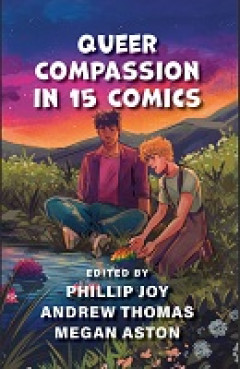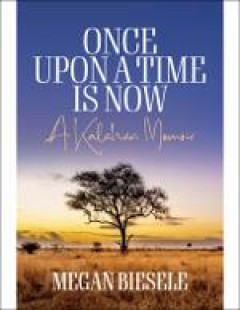Ditapis dengan

E-book Queer Compassion in 15 Comics
This unique comic anthology takes its readers on a journey through different art styles and queer perspectives, from first Prides to multi-generational friendships to finding community among chosen families. The comics in Queer Compassion offer kaleidoscopic insight into the colorful, heartbreaking, empowering, funny, and diverse lives of queer people around the world by centering compassion as…
- Edisi
- -
- ISBN/ISSN
- 9781634150581
- Deskripsi Fisik
- 201 hlmn
- Judul Seri
- -
- No. Panggil
- 306.76 JOY q
E-book Opera for Everyone : The Industry's Experiments with American Opera in…
In this quotation, Sharon draws together two concepts key to understanding The Industry’s vision of “opera for everyone”: the operatic genre’s historical elitism, and the role performance space plays in mediating this generic exclu-sivity. Sharon’s words highlight another juxtaposition as well, that between the site-specific spectacles created by The Industry and the fourth-w…
- Edisi
- -
- ISBN/ISSN
- 9780472904303
- Deskripsi Fisik
- 309 hlm
- Judul Seri
- -
- No. Panggil
- 782.1 STE o
E-book Epidemiological Change and Chronic Disease in Sub-Saharan Africa : Soc…
On a Wednesday morning the primary healthcare clinic in a small rural South African town is busy.1 A line of caregivers, mostly women, wait with babies and small children for routine check-ups and immunisations. In the adjacent waiting room patients sit or stand outside a door marked ‘Chronic Clinic’. A nurse is taking blood pressure readings and recording the numbe…
- Edisi
- -
- ISBN/ISSN
- 9781787357044
- Deskripsi Fisik
- 380 hlm
- Judul Seri
- -
- No. Panggil
- 614.4 ADJ e

E-book Once Upon a Time is Now: A Kalahari Memoir
Fifty years after her first fieldwork with Ju/'hoan San hunter-gatherers, anthropologist Megan Biesele has written this exceptional memoir based on personal journals she wrote at the time. The treasure trove of vivid learning experiences and nightly ponderings she found has led to a memoir of rare value to anthropology students and academics as well as to general readers. Her experiences focus …
- Edisi
- -
- ISBN/ISSN
- 9781800738799
- Deskripsi Fisik
- 249 halaman
- Judul Seri
- -
- No. Panggil
- 928 MEG o
E-book Sea Monsters : Things from the Sea
On a recent visit to the Smithsonian’s National Museum of Natural History, I lingered a little while longer than usual in my favorite exhibit: the Sant Ocean Hall (see oppo-site page). Wandering with no telos in mind, I let myself bask before bioluminescent beings, tremble in awe at the improbability of the extremophiles, and gaze up like a supplicant at the model of Phoenix, a North Atlantic…
- Edisi
- -
- ISBN/ISSN
- 9781947447158
- Deskripsi Fisik
- 70 hlm
- Judul Seri
- -
- No. Panggil
- 551.46 MIT s
E-book State of the World's Trees
The world is facing a biodiversity crisis and around 1 million animal and plant species are estimated to be threatened with extinction (IPBES, 2019). Trees are highly visible in most landscapes and are excellent biodiversity indicators. They are ecologically, culturally and economically of vital importance and yet there have been surprising gaps in knowledge of the diversity, distribution, abun…
- Edisi
- -
- ISBN/ISSN
- 9781905164783
- Deskripsi Fisik
- 52 hlm
- Judul Seri
- -
- No. Panggil
- 635.977 BAR s
E-book Buddhist Statecraft in East Asia
Perhaps the best way to approach this volume on Buddhist statecraft is with the following observation in mind: the proper functioning of the state is a Buddhist concern. Throughout the history of the tradition, Buddhist have engaged questions of statecraft in their creation and propagation of texts, doctrines, rituals, institutions, and visual cultures. Political actors have, in turn, employed …
- Edisi
- -
- ISBN/ISSN
- 9789004510227
- Deskripsi Fisik
- 202 hlm
- Judul Seri
- -
- No. Panggil
- 294.3 BAL b
E-book The Museum as Experience : Learning, Connection, and Shared Space
Few visitors to art museums walk in expecting to find thirtyplus middle school students acting as their own docents, leading their peers through discussions of what they see and wonder about in works of art from abstract expressionism to wood turn-ings, to sculptures by Rodin. But for close to ten years, we led seventh and eighth grade students through patterned closeviewing and dialogical …
- Edisi
- -
- ISBN/ISSN
- 9781802701470
- Deskripsi Fisik
- 184 hlm
- Judul Seri
- -
- No. Panggil
- 069 HEI t

CADANGAN PERTAMA
- Edisi
- cet. 1
- ISBN/ISSN
- 979-22-2586-2
- Deskripsi Fisik
- 400 hlm;13,5 x 20 cm
- Judul Seri
- -
- No. Panggil
- 823 MCC c
- Edisi
- cet. 1
- ISBN/ISSN
- 979-22-2586-2
- Deskripsi Fisik
- 400 hlm;13,5 x 20 cm
- Judul Seri
- -
- No. Panggil
- 823 MCC c
 Karya Umum
Karya Umum  Filsafat
Filsafat  Agama
Agama  Ilmu-ilmu Sosial
Ilmu-ilmu Sosial  Bahasa
Bahasa  Ilmu-ilmu Murni
Ilmu-ilmu Murni  Ilmu-ilmu Terapan
Ilmu-ilmu Terapan  Kesenian, Hiburan, dan Olahraga
Kesenian, Hiburan, dan Olahraga  Kesusastraan
Kesusastraan  Geografi dan Sejarah
Geografi dan Sejarah